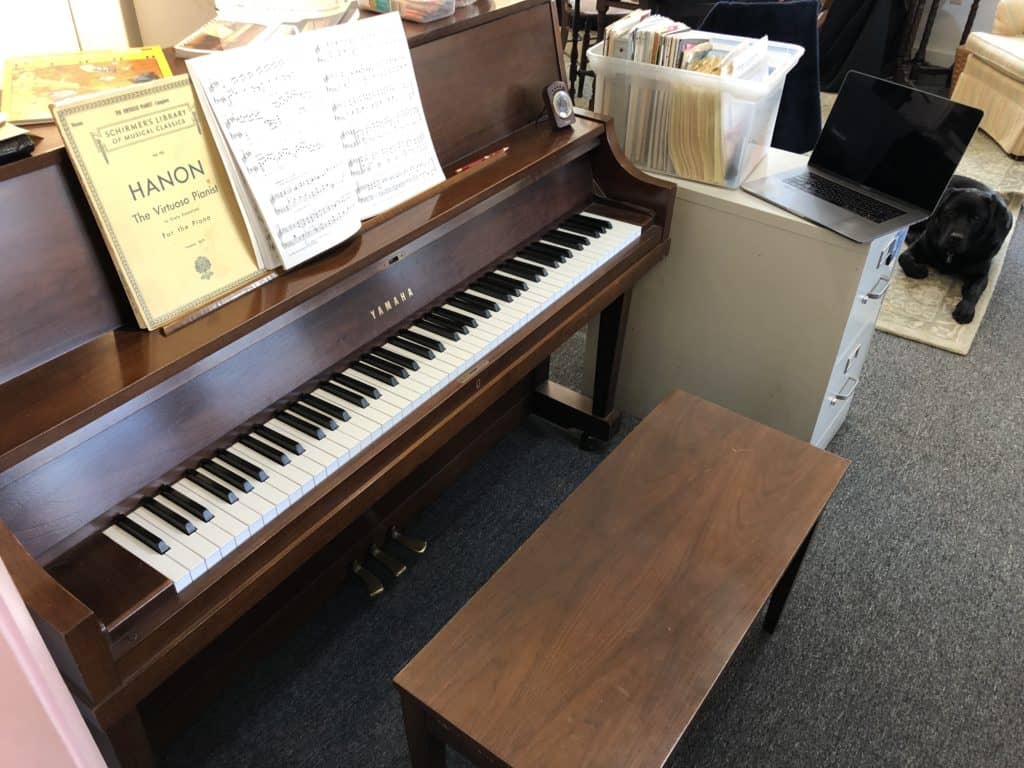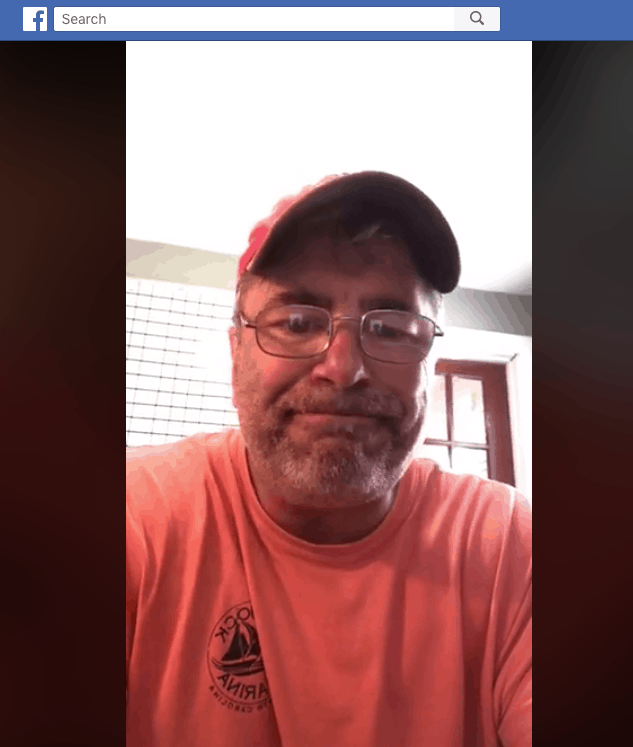To Stay Connected, It’s Time to Get Creative

By Krista Pfunder
Social distancing is forcing everyone to think outside the box when it comes to staying in contact with their community. Local organizations are getting creative—from government to history and the arts. Here are three local approaches to carrying on.
A local music studio is taking what is traditionally a hands-on business and switching to remote teaching.
“Virtual lessons will never replace individual in-person lessons, but they provide an alternative that allows students to progress and not cement in poor technique, wrong notes or incorrect rhythm,” says Mary M. Hoffman, owner of the Mary M. Hoffman Music Studio in Edgewater.
Students view Hoffman—and often her Labrador, Molly— in her studio via FaceTime or the video feature on Facebook Messenger.
“The tech challenges—all on my end—were resolved by my homebound college student,” Hoffman says.
She assigns new music and analyzes current assignments.
“Students get off to a good start with new works and work through problem areas in ongoing pieces,” Hoffman says.
The response has been positive.
“My students have been very receptive, and we have managed to accomplish almost as much material as we would have in person,” Hoffman says. “It’s a way to keep students playing, interested and engaged. Molly is fascinated by the virtual lessons but—like me—misses seeing my students in person.”
Taking Care of Town Business
Tune in to the town of North Beach Facebook page and you may spot a video of Mayor Mike Benton sharing his latest message to residents.
The town’s staff, working from home like so many of us, holds virtual meetings instead of live sessions.

“We’re blessed to have a dedicated staff that is willing to step up and adjust where needed,” Benton says. “Though we’re not moving physically at town hall our services haven’t stopped. If a resident calls town hall they will get a live person…I like to think we haven’t skipped a beat.”
The town is using Zoom and the Microsoft Team application to stay in touch.
“These tools have been amazing,” Benton says. “They won’t take the place of a face-to-face meeting but are working well in these crazy times.”
Virtual DAR
Election time for the John Hanson Chapter of the National Society Daughters of the American Revolution happened to roll around just as social distancing was recommended. “The majority of members are over 60, so we canceled our March meeting even though it was going to be a small gathering,” says Mollie King, chapter regent. “Yet we still needed to do chapter elections and we had collections to take up in support of Project Patriot—our active duty military project—and to support DAR Schools.”
The chapter set up a two-hour window for members to stop by a parking lot and drop off ballots and donations.

(right) at the DAR parking lot event.
“We set out boxes, so members could park and drop their stuff into the boxes, then leave,” King says. “We got a chance to socialize briefly at a distance, with no more than two or three members at a time all standing at least six feet apart.”
Now that they’re dealing with the parameters of a stay-at-home order, the chapter is planning a social gathering online.
“I see this as a watershed moment for our country, with so many major institutions, government, businesses, schools, forced to throw out rules that restricted telework and distance learning and develop whole new workflows overnight,” King says. “There’s a lot bad about the current situation, but our nation is nothing if not resilient, and one good thing that may come out of it is developing and accepting better digital ways to keep us all together, no matter how far apart we need to be.”
Mayor Mike Benton also sees the silver lining.
“The biggest challenge is that we’re a small town with a strong sense of community and not being able to meet up around town is tough,” Benton says.
“I like to say that we all meet as strangers but we leave as friends. These challenges have brought us closer as a community. Neighbor looking out for neighbor has been our battle cry.”
